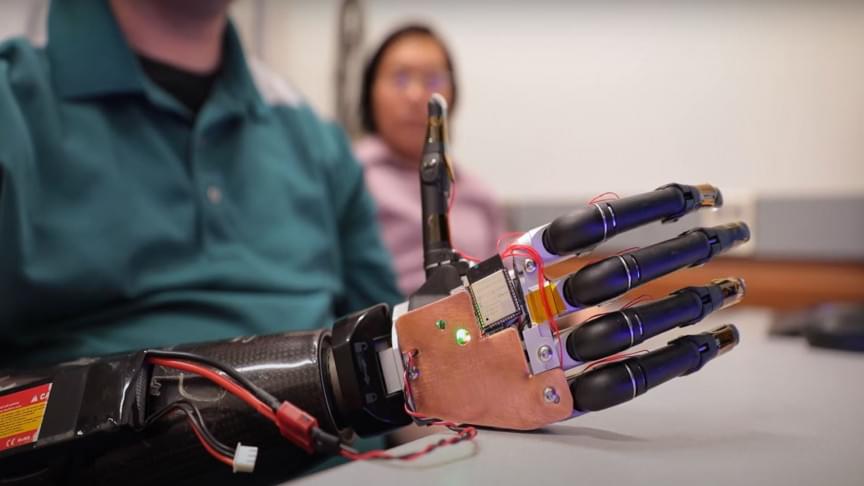This AI powered prosthetic arm understands what you think. Muscle-controlled prosthetic limbs that patients with amputations across the globe currently use have various limitations and challenges. Good quality prosthetics parts are cumbersome, come with a complex setup, and require patients to undergo training for several months to learn their use. Interestingly, a new technology proposed by a team of researchers at the University of Minnesota (UMN) can overcome all such challenges.
It may sound like science-fiction, but the researchers claim that the new technology would allow patients to control robotic body parts using their thoughts. By employing artificial intelligence and machine learning, the researchers at UMN have developed a portable neuroprosthetic hand. The robotic hand comes equipped with a nerve implant linked to the peripheral nerve in a patient’s arm.
Explaining the significance of their neuroprosthetic innovation, project collaborator and UMN neuroscientist Edward Keefer said, “We are well along the way toward allowing upper limb amputees at least, and other people in the future, to have totally natural and intuitive control of their prosthetic devices.” ## THE NEUROPROSTHETIC HAND IS DIFFERENT FROM YOUR REGULAR PROSTHETIC LIMBS
The prosthetic body parts currently available on the market detect shoulder, chest, or muscle movement. They have sensors to recognize signals in specific regions of the human body. Therefore, every time a patient wants to move his hand, he is required to trigger his body muscles. Adapting to such muscle-driven limb movement is not easy for patients, and many such devices are not suitable for physically weak individuals.
Some advanced and efficient muscle-sensitive prosthetics come with complex wiring and other arrangements that make them difficult to use. The amputees have to go through a lot of training to adjust to such devices, which often increases frustration and stress. Now imagine a device that starts working immediately, is less invasive, requires no training, no muscle activation, and no complex setup.
The neuroprosthetic arm enables the patients to move their arms simply at the will of their minds. It is an efficient, easy to use, and a lot more intuitive alternative to any commercial prosthetic system available.
Researcher and one of the authors of the study, Jules Anh Tuan Nguyen, said, “With other commercial prosthetic systems, when amputees want to move a finger, they don’t actually think about moving a finger. They’re trying to activate the muscles in their arm since that’s what the system reads. Because of that, these systems require a lot of learning and practice. For our technology, because we interpret the nerve signal directly, it knows the patient’s intention. If they want to move a finger, all they have to do is think about moving that finger.” Full Story:
A team of researchers at the University of Minnesota has created a robotic arm that can function according to your thoughts. In the future, such advance prosthetic body parts might allow humans to control computer-based devices with their minds.
